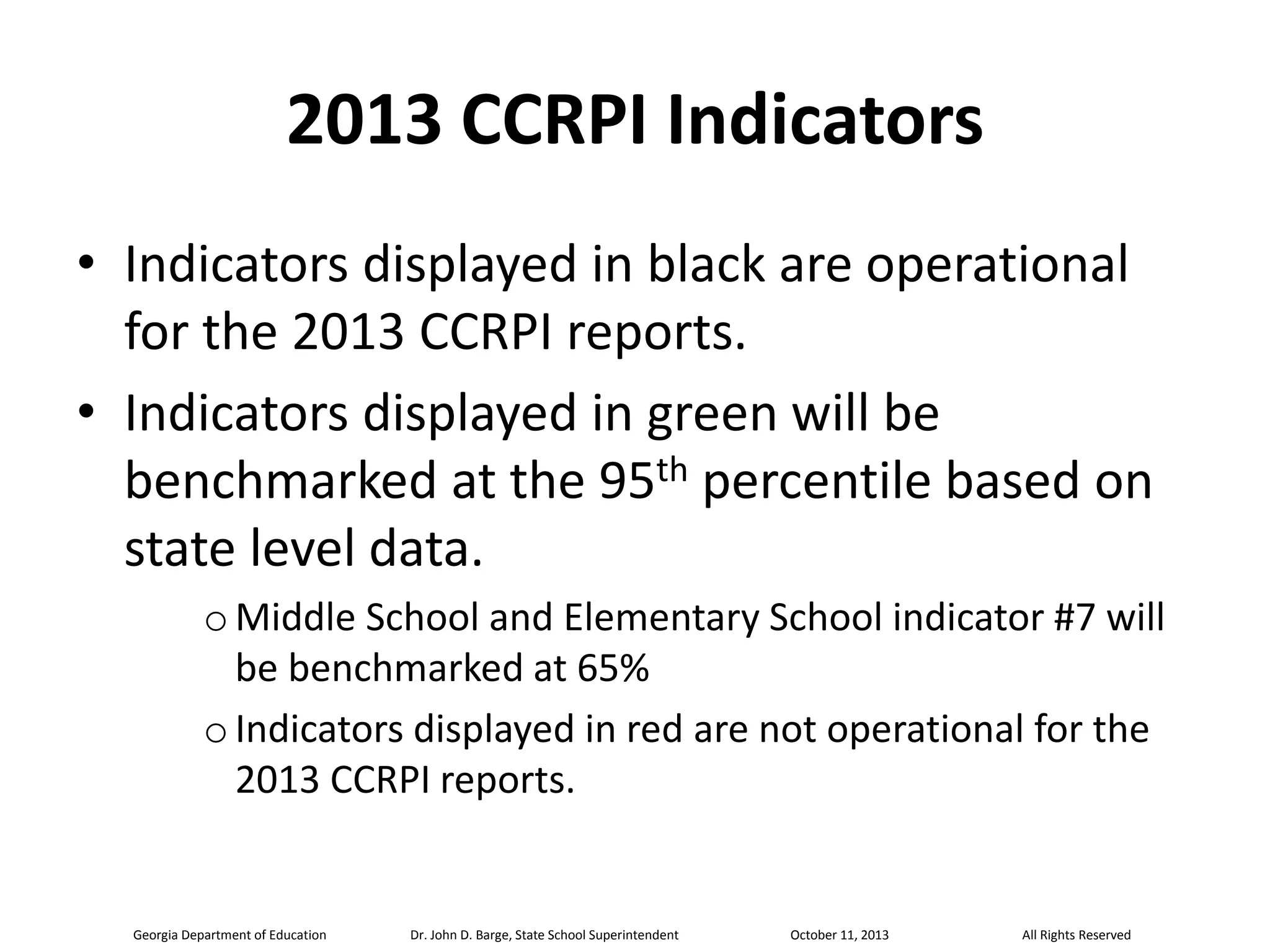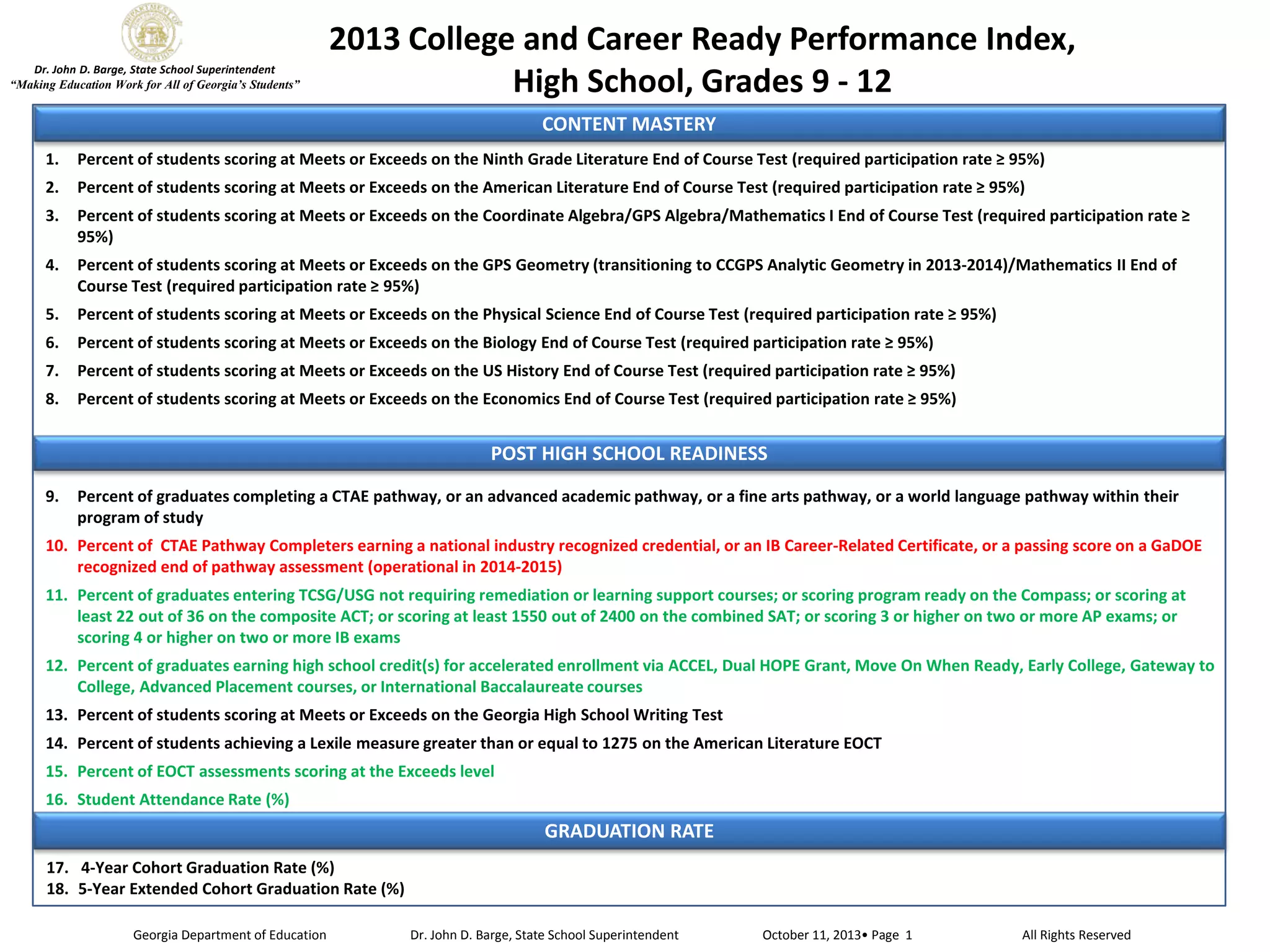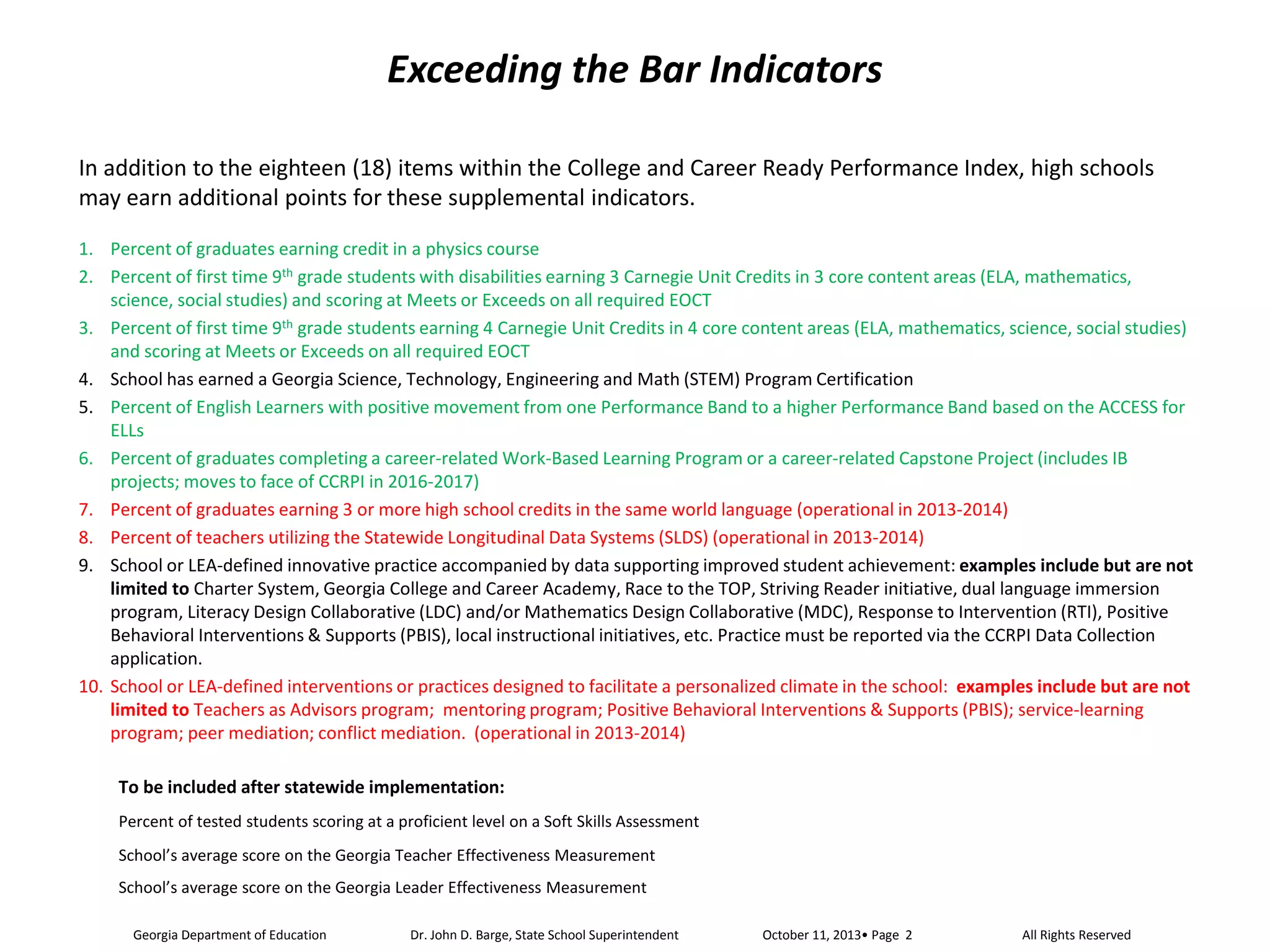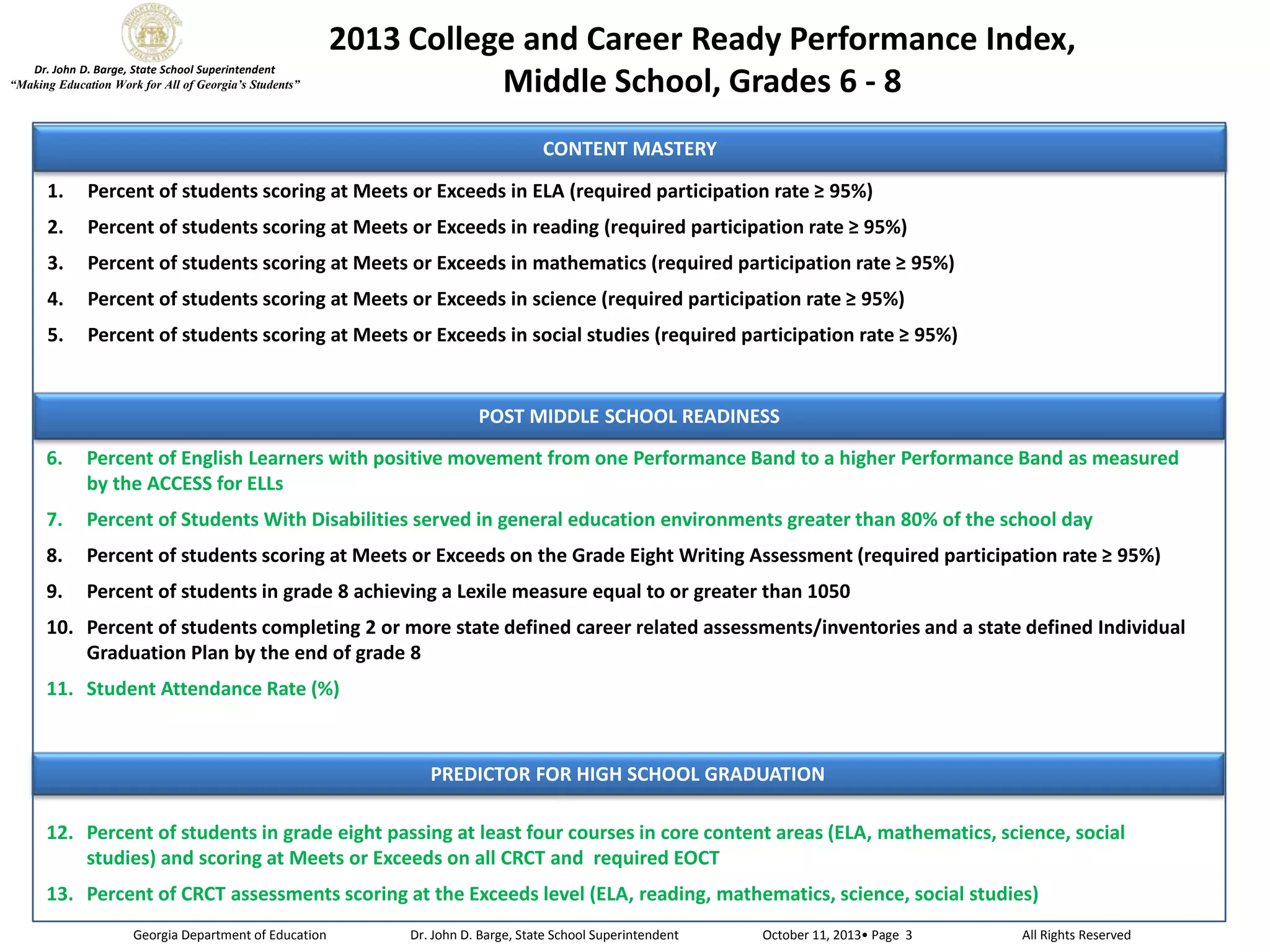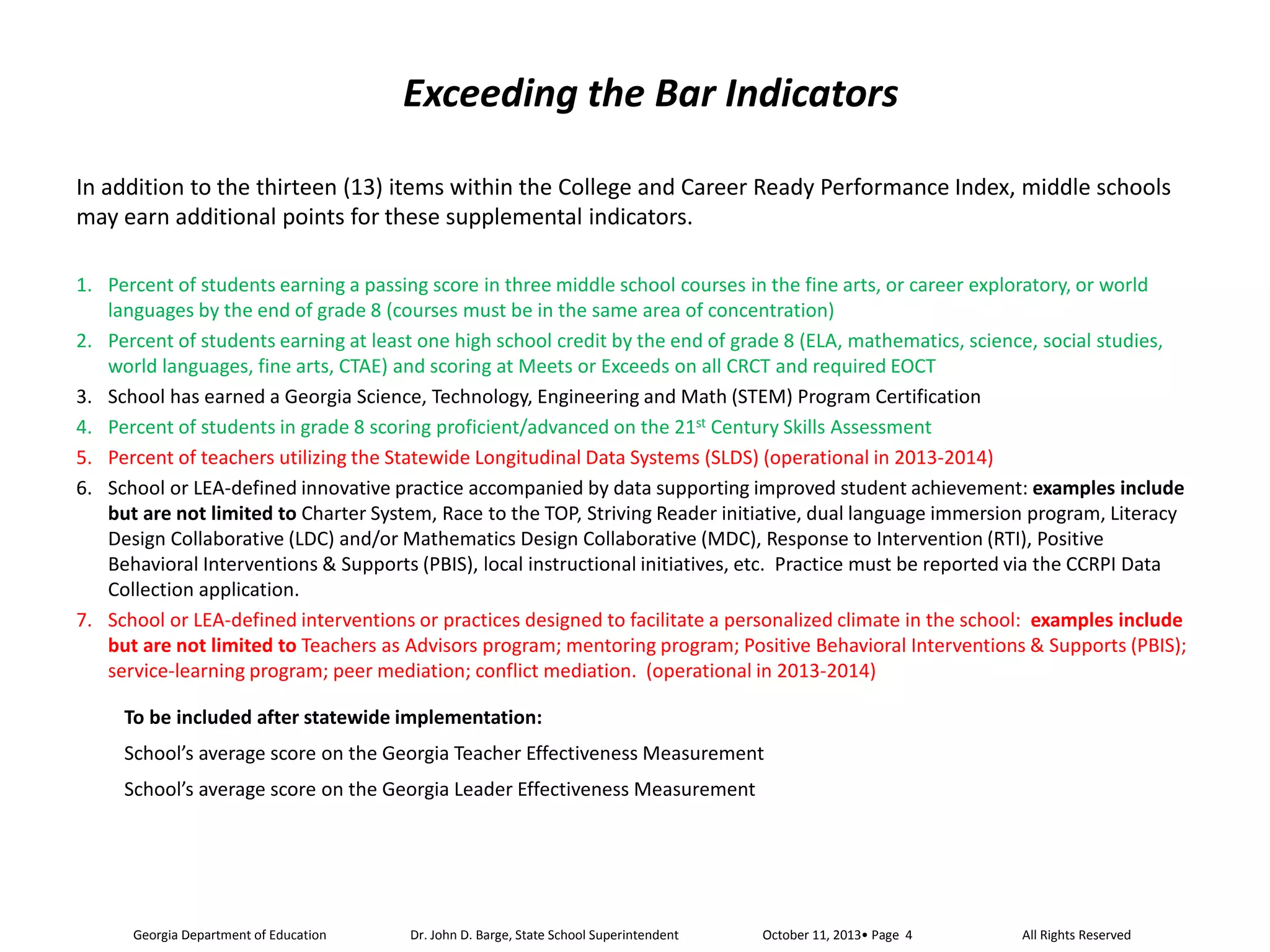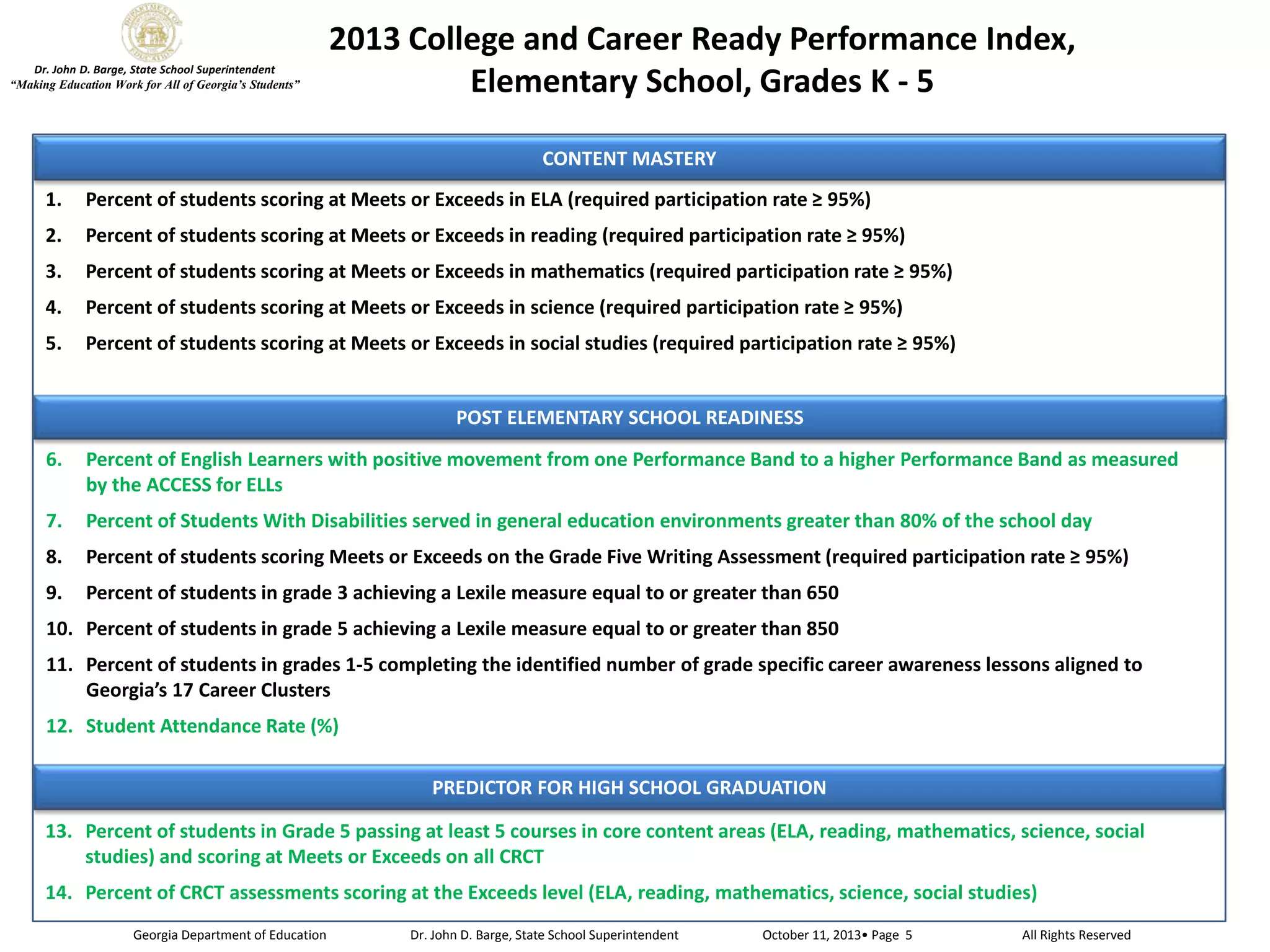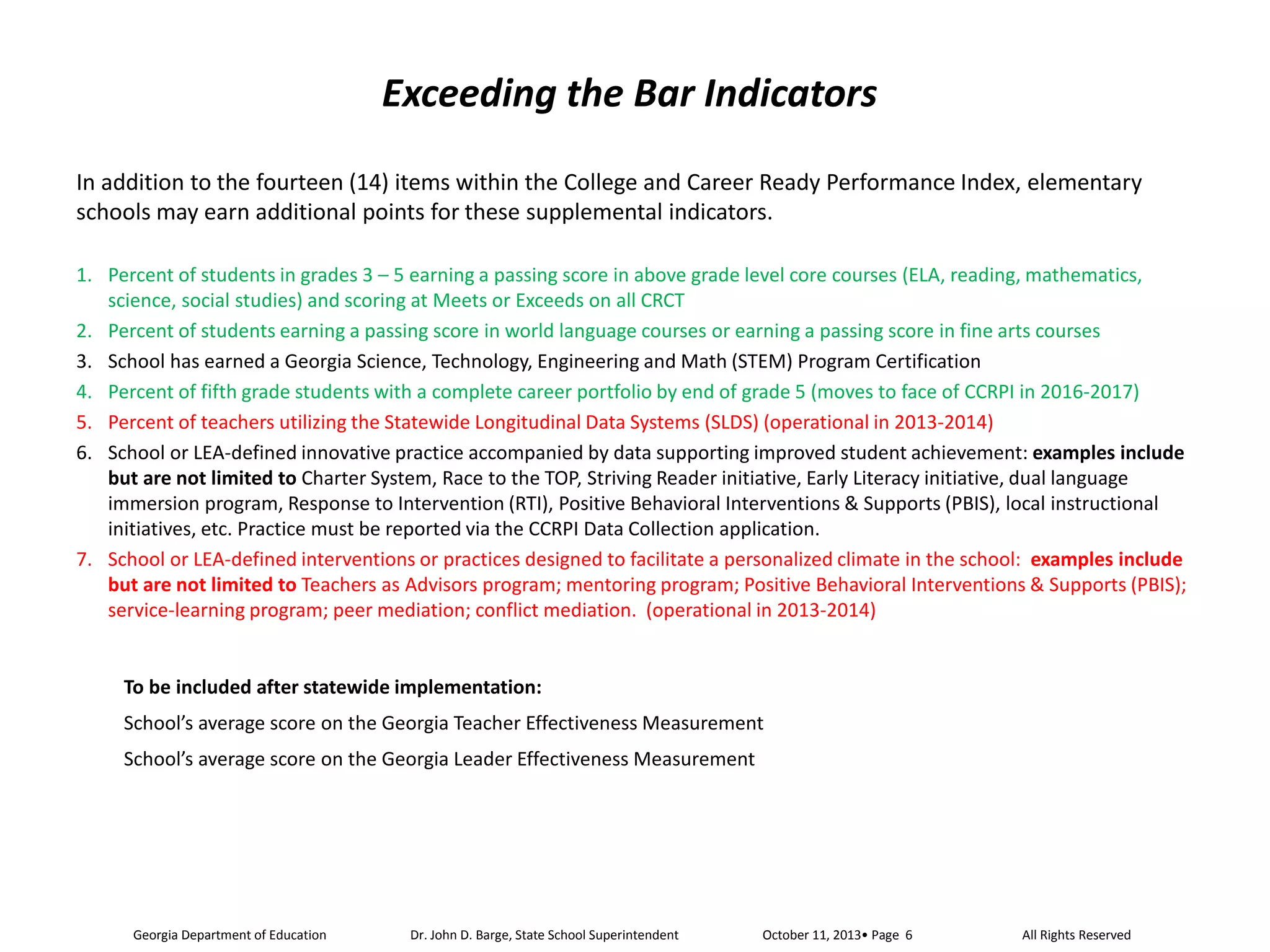The document outlines the indicators used in Georgia's 2013 College and Career Ready Performance Index (CCRPI) for elementary schools, middle schools, and high schools. It provides details on the content mastery, post-education readiness, and other indicators measured for each level. It also lists supplemental "Exceeding the Bar" indicators that schools can earn additional points for achieving.
